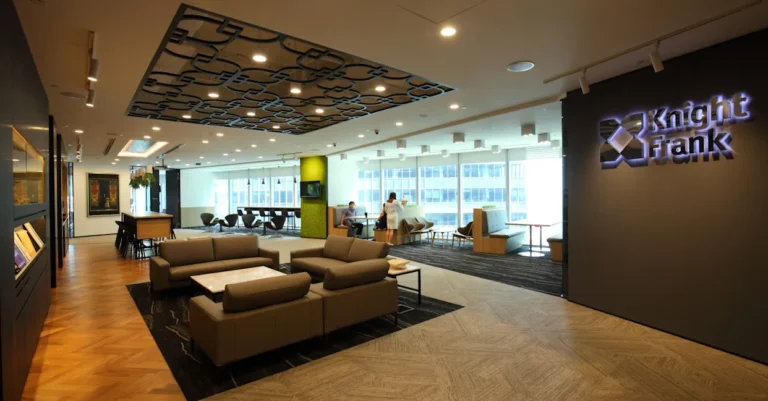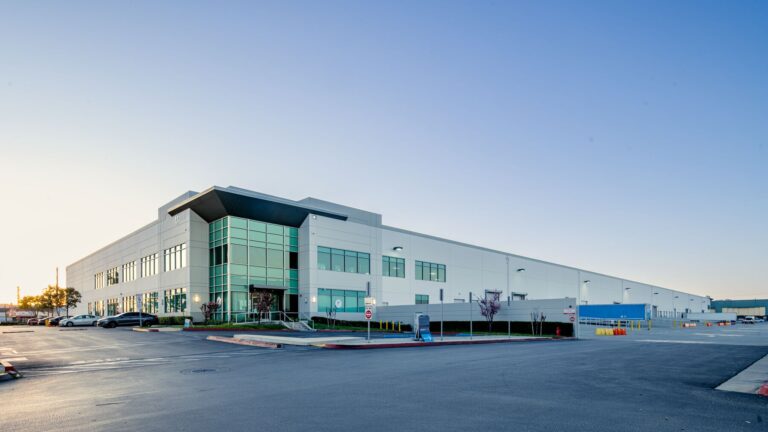How to Secure Commercial Office Space for Lease Comprehensive 2025 Guide
Finding the right commercial office space for lease can be a pivotal decision for your business. Whether you’re a startup, an established firm expanding into a new region, or a company shifting to hybrid-work mode, selecting the right leased office location impacts your team productivity, brand image, and operational costs.
In this detailed guide, you will learn what commercial office space for lease means, the benefits of leasing over buying, how technology is reshaping the search and negotiation process, plus five real-world platforms you can use to identify and secure these spaces. By the end, you’ll be equipped with actionable knowledge to proceed confidently.
Understanding Commercial Office Space for Lease
What does “commercial office space for lease” entail
“Commercial office space for lease” refers to a physical business-use property-offices, suites, or floors in a commercial building that a company rents from a landlord, rather than purchasing. The “lease” aspect means you commit for a certain term (e.g., 3-10 years or sometimes shorter) and the landlord retains ownership. Your business pays rent and may share maintenance, utilities, or common‐area costs depending on the lease structure.
Leasing gives businesses access to professional premises without the upfront capital outlay required to buy a property. It also allows flexibility in choosing size, location, and amenities based on your current growth stage. Because leased office space can also be furnished, in prime business districts, or come with building services (security, cleaning, parking), it gives businesses a competitive advantage in presenting a polished front to clients and partners.
Key lease types and what you should know
When leasing commercial office space, you may encounter different lease structures. For example, a “gross lease” means the landlord covers many costs and you pay a higher base rent. A “net lease” may mean you pay rent plus some utilities, maintenance, or common area costs. Some leases are “flexible” or “serviced” offices-shorter terms, furnished, managed for you. Others are full-term leases in large office towers with buildings of Class A, B, or C standard.
Understanding which lease structure you are signing is critical because it affects your monthly cost, your obligations, and your ability to expand or move. The office’s physical condition, building services, connectivity (internet, power), parking, and location all impact value. You’ll want to evaluate your business needs and growth plan first before committing.
Benefits of Leasing Commercial Office Space
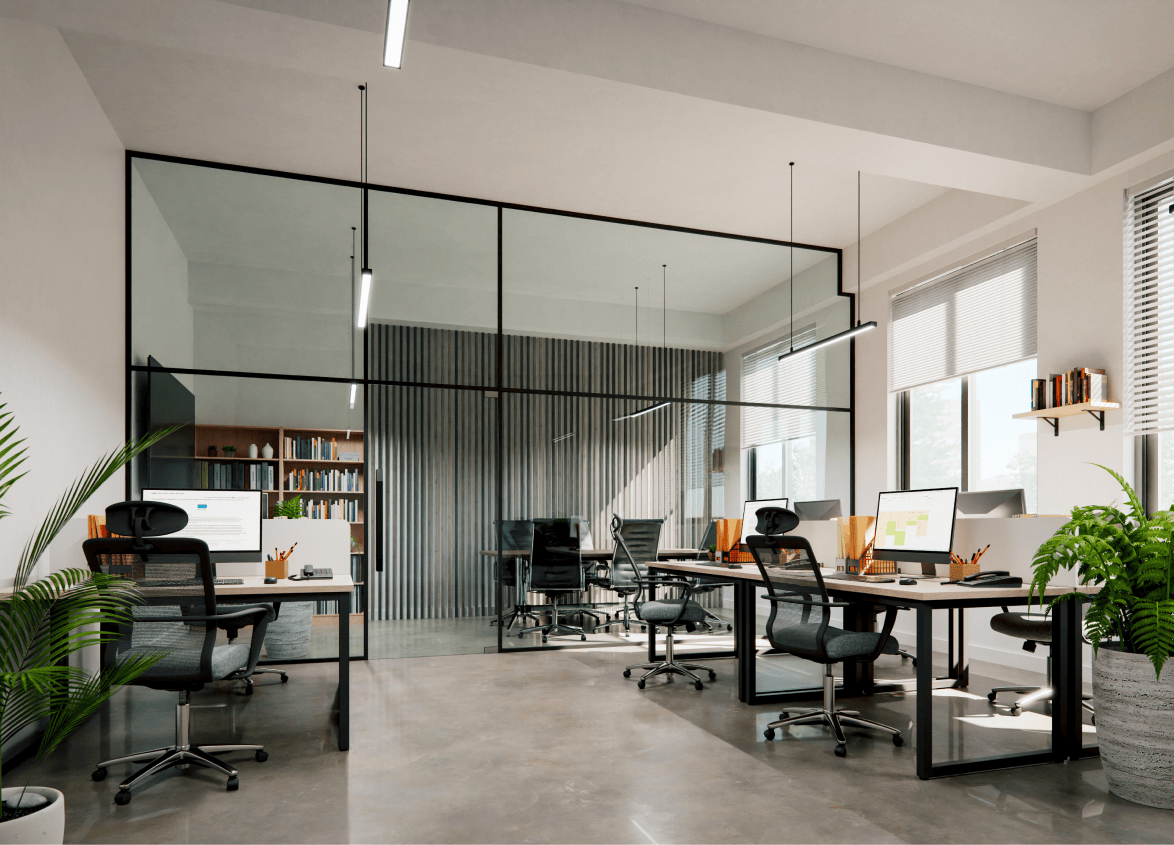
Financial flexibility and lower risk
One of the major benefits of leasing commercial office space is not having to invest large capital in property acquisition. Leasing enables you to allocate funds toward growth activities-hiring talent, marketing, product development-rather than tying up money in bricks and mortar. Because you’re not buying, you avoid property taxes, major repair costs, or the risk of property value declines.
Leases also allow you to scale more easily. If your business grows, you may move to a larger space; if you shrink or pivot, you may choose a smaller footprint at the end of a lease term. This flexibility is especially valuable in the modern economy, where business models evolve rapidly.
Access to premium locations and enhanced business image
Another important advantage: leasing gives access to locations that may otherwise be unaffordable for purchase. Being in a reputable business district or a building with high-end amenities enhances your brand credibility. Clients and partners are likely to view a company located in a professional office environment more favourably than one operating out of a less distinguished space.
Additionally, many leased office spaces today offer built-in amenities: meeting rooms, coworking lounges, on-site cafes, parking, security, high-speed internet-and sometimes even smart building systems (automated climate control, access systems). These features improve employee satisfaction, operational efficiency, and aid recruiting.
Top 5 Real-World Platforms to Find Commercial Office Space for Lease
Below are five credible platforms that businesses can use to discover, evaluate, and lease commercial office space. Each has strengths and is designed to meet different needs.
1. LoopNet
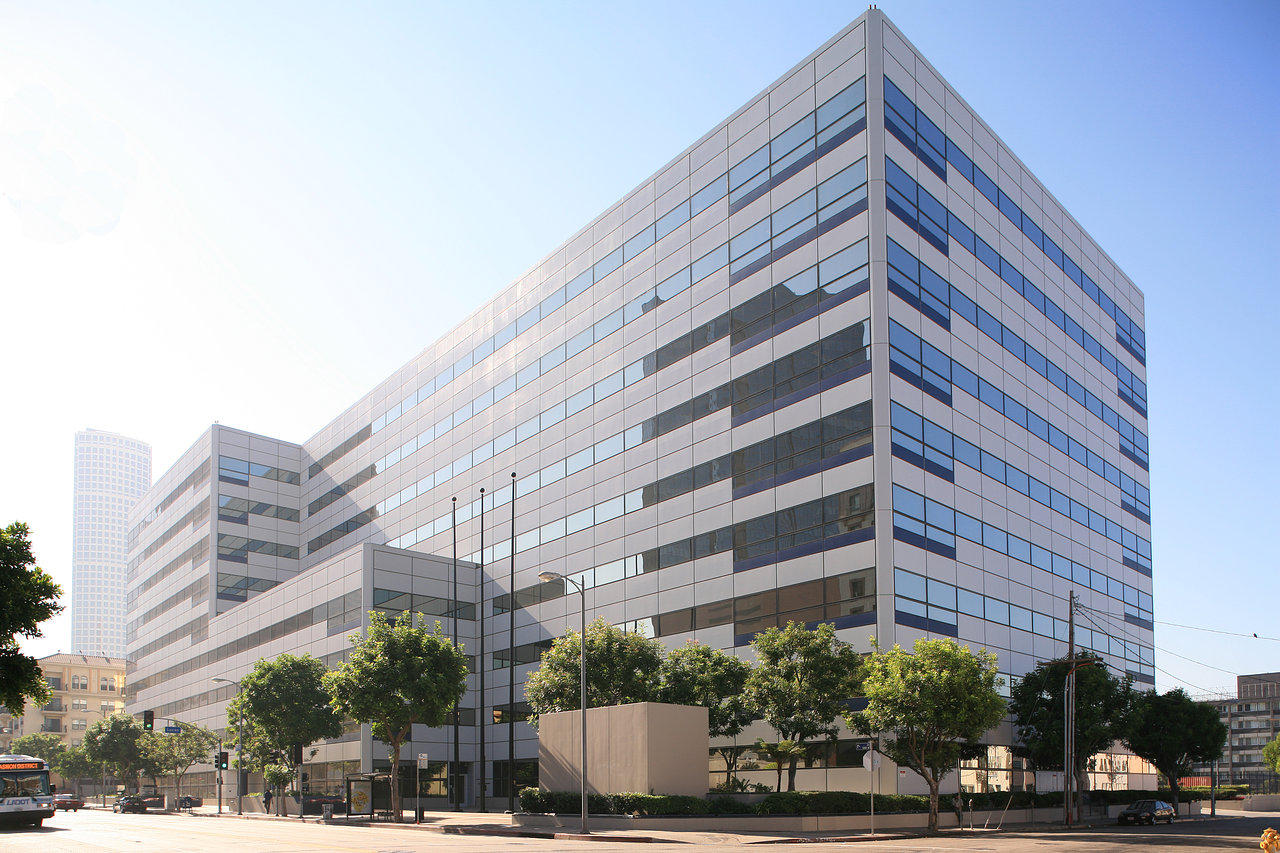
LoopNet is one of the most widely known commercial real estate marketplaces. The site lists offices, retail spaces, and warehouses-both for lease and sale. loopnet.com
What makes LoopNet valuable is its sheer volume of listings and detailed filters (building type, square footage, lease type, location). You can also find brokers, view floor plans, and compare different properties side-by-side.
Use Case: A mid-sized company expanding into a new city uses LoopNet to scan multiple office options within their budget and preferred district, compares amenities, and shortlists three buildings for site visits. The problem solved: quickly sourcing many relevant leased office spaces without spending weeks manually contacting brokers.
2. MatchOffice
MatchOffice is a global platform specialising in commercial offices, coworking, business centres, and more. MatchOffice.com
The platform emphasises verified landlord listings and uses a search-agent feature-you specify your criteria and the system alerts you to matching spaces. It’s especially helpful when time is limited or you have specific requirements (size, location, amenities).
Use Case: A startup with 10 employees wants to lease an office in a business centre for less than 2 years. They use MatchOffice’s search agent to get notified of small-suite offices in business centres, solving the problem of finding shorter-term leases in established locations.
3. WeWork

WeWork is a provider of flexible office space and coworking environments globally. WeWork
For businesses seeking a more turnkey leased office solution, WeWork offers furnished offices, shared spaces, enterprise solutions, and flexible terms. They often include utilities, cleaning, and amenities, simplifying the leasing process.
Use Case: A remote-first company wants to establish a small regional hub in a city for six months before committing longer term. They lease a WeWork private office, avoiding the setup and finishing costs of a traditional lease. The problem solved: rapid deployment and exit flexibility.
4. CommercialCafe
CommercialCafe provides a large database of commercial listings, including offices for rent or lease, coworking, and industrial spaces. commercialcafe.com
What differentiates it is its data-driven features: you can review market vacancy rates, building trends, and city-by-city analytics. This helps you compare prospective leased office spaces not only by cost, but market positioning.
Use Case: A regional business evaluating two different cities for relocating their headquarters uses CommercialCafe to compare office lease rates, future developments, and vacancy trends. The problem solved: making an informed location decision beyond just rent price.
5. TenantBase
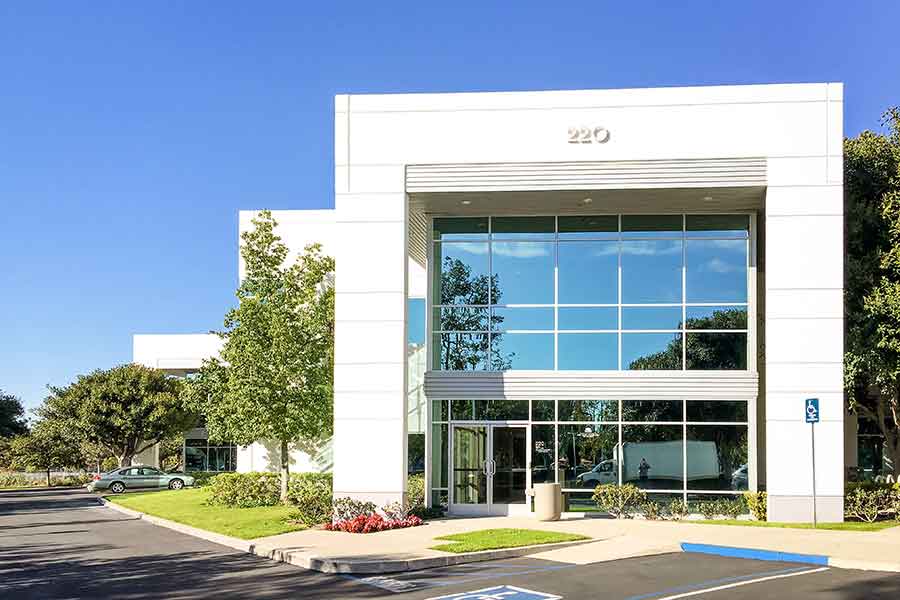
TenantBase specialises in helping tenants find office space for lease with local advisory support. tenantbase.com
Their model pairs you with a local advisor who will survey options, arrange tours, and help in the negotiation of the lease-useful if your business lacks real estate expertise.
Use Case: A fast-growing tech firm setting up a new branch in a city they’ve not operated in before uses TenantBase to plug into local market knowledge and eliminate negotiation risks. The problem solved: lack of local property market knowledge and managing lease negotiation alone.
How Technology Is Improving Commercial Office Leasing
Data Analytics and Market Intelligence
Lease seekers now benefit from advanced data analytics: platforms can show historical rent trends, vacancy rates, foot traffic, or demographic data. That helps you choose which building, which location, and which lease terms are wise. Rather than relying solely on instinct, you make evidence-based decisions that reduce risk and often result in better lease deals.
Because landlords and brokers know tenants have this access, they may offer more competitive incentives (tenant improvement allowances, free rent) in markets where data reveals lower demand. By leveraging technology, you negotiate smarter.
Virtual Tours, Smart Facilitie,s and Flexibility
Modern leased offices increasingly include smart building features (IoT sensors for lighting/climate, access control, collaboration spaces), and you can preview offices remotely via 3D tours or video walk-throughs. This means you can evaluate multiple buildings across cities without travelling extensively. Especially in hybrid-work and global teams, this is a game-changer.
Flexibility platforms (like flexible terms, plug-and-play offices) also gain from tech: you can scale up/down easily, lease short-term, and integrate your IT/communications quickly. For a business in flux, technology-enabled leased offices solve the problem of being locked into long-term leases unsuited to your evolving model.
Why Your Business Should Consider Leasing a Commercial Office Space
Addressing Growth, Mobili,ty and Risk
Businesses evolve-team sizes change, locations matter, and remote work may alter office needs. Leasing gives you agility. You can start small, expand into a larger leased office, or choose shorter-term or flexible lease arrangements. If your business model changes (for example, more remote work), you are not stuck with a massive owned property you can’t use efficiently.
Businesses also face risk in owning property: market declines, unexpected repair costs, long long-term commitments. Leasing shifts much of that risk to the landlord and lets you focus on operations. It also means you can enter markets quickly, establish a regional office, test it, then escalate or exit.
Building a Professional Presence and Enhancing Efficiency
Leased commercial office space often comes with good infrastructure, professional reception, amenities, and location advantages. That enhances your external image with clients and internal culture for your team. Being located in a reputable office building in a desirable business district signals stability and credibility.
Also, you gain operational efficiency: you avoid setting up building operations, the landlord often manages common services, and you focus on your business. Leasing also enables you to negotiate favourable terms (improvement allowances, early-move-in periods) which may rival ownership costs when you consider capital tied up, depreciation, and maintenance.
Step-by-Step Guide to Leasing Commercial Office Space
-
Define your requirements: size (sq ft), layout (open vs private), location preferences, budget for rent + service charges, term length, amenities (parking, connectivity), and expansion options.
-
Search listings: Use platforms above (LoopNet, MatchOffice, etc) to find potential buildings. Filter by your criteria asaveave the hortlist.
-
Analyse market & compare: Look at rent levels, building class (A/B/C), service charges, lease structure (gross/net), building amenities, ease of access for employees, and parking.
-
Inspect properties: If possible, visit or take virtual tours. Assess layout suitability, connectivity, building reputation, and fit-out condition.
-
Negotiate lease terms: Rent, escalation, term length, tenant improvements, exit options, renewal rights, parking, CAM (common area) charges.
-
Review contract with legal counsel: Ensure clarity of obligations: whatlandlordd covers, what the tenant pays, what happens at the end of the lease, option to expand or sub-lease.
-
Sign lease and move in: Coordinate fit-out if needed, IT/internet setup, furniture, signage, building access, and ensure lease operations commence smoothly.
-
Monitor occupancy and future strategy: Regularly review utilisation, cost per workstation, and allow for scaling up/down ahead of renewal or exit.
Where to start your search
Frequently Asked Questions
Q1. How long is a typical lease term for commercial office space?
A standard lease term often ranges from 3 to 10 years, depending on building class, size, tenant profile, and local market. Flexible offices and coworking may offer shorter terms (6 months to 2 years). The choice depends on your business stability, growth plaplanand need for flexibility.
Q2. Can I negotiate the lease terms effectively when leasing an office?
Yes. Lease terms are negotiable. Key negotiation points include base rent, escalation (how much rent increases over time), tenant improvement allowance (fit-out budget from landlord) early-move-inn, parking allocation, exit right,s r sub-leasing rights. Using data (market rent levels, vacancy) strengthens your position.
Q3. What extra costs should I budget for besides base rent?
In addition to base ret you should build in: common area (CAM) charges or service charges, utilities, internet/IT infrastructure, fit-out or tenant improvements, parking cost, insurance, maintenance cost if tenant-responsible, potential moving or signage costs. Reviewing all cost components avoids surprises after move-in.

